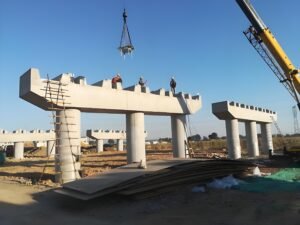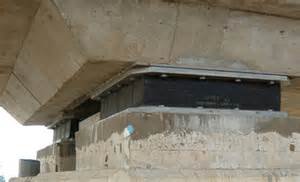Bridges are awe-inspiring structures that connect us across vast distances. But have you ever stopped to think about the hidden heroes that ensure their stability? Nestled between the bridge deck and its supporting piers lie the unsung guardians – bridge bearings.
What Do Bridge Bearings Do?
Bridge bearings play a crucial role in bridge functionality. Their primary purpose is to accommodate controlled movement within the bridge structure. This movement can arise from various factors:
- Thermal Expansion and Contraction: As temperatures fluctuate, bridges naturally expand and contract. Bearings allow for this movement, preventing stress buildup that could damage the bridge.
- Material Creep and Shrinkage: Over time, bridge materials like concrete experience slight creep (gradual deformation) and shrinkage (loss of volume). Bearings absorb these movements, maintaining structural integrity.
- External Forces: Seismic activity and ground settlement can cause the bridge to shift. Bearings allow for this movement, protecting the bridge from cracking or failure.
A Diverse Team: Types of Bridge Bearings
The specific type of bridge bearing used depends on factors like the bridge’s size, load capacity needs, and desired movement capabilities. Here’s a glimpse into some common types:
- Elastomeric Bearings: The most popular type today, these bearings use layers of elastomeric material (rubber-like compounds) and steel plates to provide flexibility for both vertical and horizontal movements.
- Steel Bearings: These bearings utilize steel surfaces for transferring forces. Different variations include flat bearings for minimal movement, curved bearings for rocking motion, and roller bearings for horizontal movement on rollers.
- PTFE Bearings (Sliding Bearings): These bearings incorporate a low-friction material like PTFE (polytetrafluoroethylene) between steel surfaces, allowing for smooth horizontal movement with minimal resistance.
Beyond the Basics: Advantages of Modern Bearings
Modern bridge bearings offer several advantages over older designs:
- Reduced Stress: By accommodating movement, bearings prevent stress buildup that could damage the bridge structure.
- Durability: Modern materials offer exceptional resistance to wear and tear, ensuring long-lasting performance.
- Seismic Resistance: Special bearings can be designed to absorb seismic energy, protecting the bridge during earthquakes.
Conclusion
Bridge bearings, though often hidden from view, are essential components for bridge stability and longevity. By understanding their functions and the diverse types available, we gain a deeper appreciation for the silent guardians that keep our bridges standing strong. These unsung heroes ensure safe passage across vast distances for generations to come.



